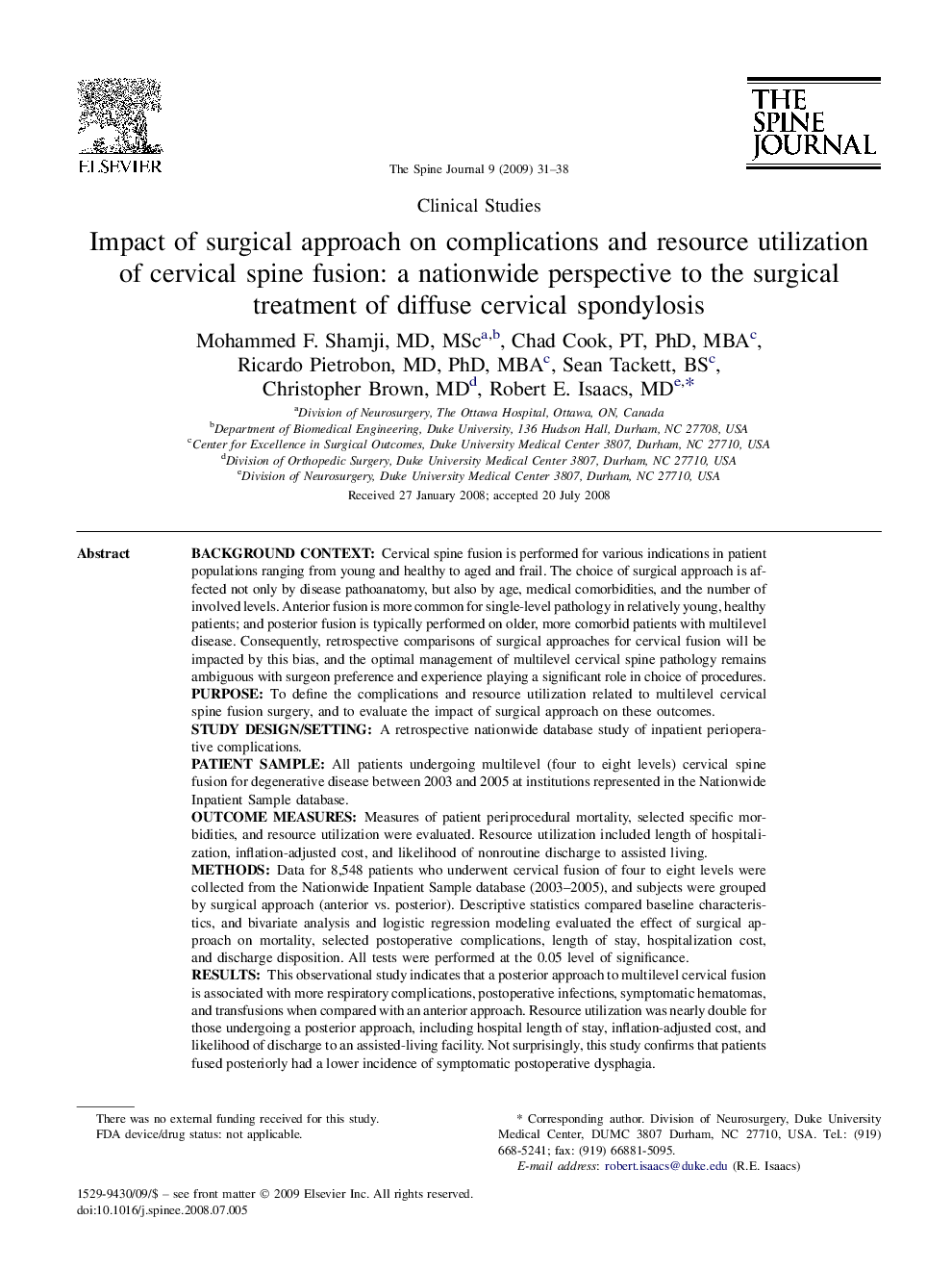| کد مقاله | کد نشریه | سال انتشار | مقاله انگلیسی | نسخه تمام متن |
|---|---|---|---|---|
| 4099067 | 1268631 | 2009 | 8 صفحه PDF | دانلود رایگان |

Background contextCervical spine fusion is performed for various indications in patient populations ranging from young and healthy to aged and frail. The choice of surgical approach is affected not only by disease pathoanatomy, but also by age, medical comorbidities, and the number of involved levels. Anterior fusion is more common for single-level pathology in relatively young, healthy patients; and posterior fusion is typically performed on older, more comorbid patients with multilevel disease. Consequently, retrospective comparisons of surgical approaches for cervical fusion will be impacted by this bias, and the optimal management of multilevel cervical spine pathology remains ambiguous with surgeon preference and experience playing a significant role in choice of procedures.PurposeTo define the complications and resource utilization related to multilevel cervical spine fusion surgery, and to evaluate the impact of surgical approach on these outcomes.Study design/settingA retrospective nationwide database study of inpatient perioperative complications.Patient sampleAll patients undergoing multilevel (four to eight levels) cervical spine fusion for degenerative disease between 2003 and 2005 at institutions represented in the Nationwide Inpatient Sample database.Outcome measuresMeasures of patient periprocedural mortality, selected specific morbidities, and resource utilization were evaluated. Resource utilization included length of hospitalization, inflation-adjusted cost, and likelihood of nonroutine discharge to assisted living.MethodsData for 8,548 patients who underwent cervical fusion of four to eight levels were collected from the Nationwide Inpatient Sample database (2003–2005), and subjects were grouped by surgical approach (anterior vs. posterior). Descriptive statistics compared baseline characteristics, and bivariate analysis and logistic regression modeling evaluated the effect of surgical approach on mortality, selected postoperative complications, length of stay, hospitalization cost, and discharge disposition. All tests were performed at the 0.05 level of significance.ResultsThis observational study indicates that a posterior approach to multilevel cervical fusion is associated with more respiratory complications, postoperative infections, symptomatic hematomas, and transfusions when compared with an anterior approach. Resource utilization was nearly double for those undergoing a posterior approach, including hospital length of stay, inflation-adjusted cost, and likelihood of discharge to an assisted-living facility. Not surprisingly, this study confirms that patients fused posteriorly had a lower incidence of symptomatic postoperative dysphagia.ConclusionsThis nationwide study defines the incidence of mortality and the frequency of inpatient complications encountered during multilevel cervical fusion. The results suggest that immediate morbidity from anterior approaches is less than those undergoing posterior fusion. Prospective analysis is required to evaluate if these findings remain significant in a randomized study population. Further, these results represent only perioperative complications. However, based on the data presented herein, when confronted with the patient requiring a four-level cervical fusion, the anterior approach may offer a less risky and less costly option.
Journal: The Spine Journal - Volume 9, Issue 1, January 2009, Pages 31–38